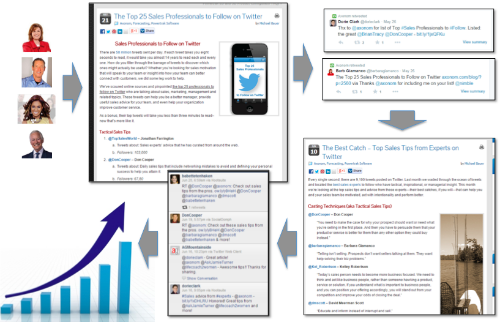
A small business technology company was focusing their online marketing efforts on SEO and this approach proved to be effective for several years.
Research revealed relevant keywords in demand from searchers actively looking for solutions in this software category. Existing content was optimized, cross linked and new content was created where needed. Content was promoted to attract links and social shares to ensure a presence on crawlable social media platforms.
But then organic traffic began to slow down in growth and eventually decline, despite following SEO best practices capable of the most specific Google scrutiny.
A decision needed to be made: Will more aggressive SEO tactics be used or was it time to shift perspective?
Taking a more customer focused perspective, the marketers involved decided to take a step back from an “all SEO” mindset to consider where buyers were discovering, consuming and acting on information to inform their software purchases. This insight revealed a host of opportunities. Namely, that buyers were relying not only on vendor information found through search, but also the professional recommendations and personal insights from industry experts.

The Shift from SEO to Social Influencer Content
Digging in to the buyer experience from awareness to consideration to inquiry revealed a mix of pain points the target audience often experienced in their journey to discover, evaluate and decide on software vendors. These pain points became areas of focus for the software company to create an affinity between the brand and it’s ability to be a solution for these important troubles felt by buyers.
But how to make the transition? You can’t simply switch strategies and become influential for something overnight.
The solution was to use the pain point topics as filters to identify industry influencers for the purpose of engaging them to co-create content.
Step 1 – Identify – Using tools like Traackr, Buzzsumo and Followerwonk, a list of relevant, active influencers was identified.
Step 2 – Romance – With no previous connection to these influencers, the software brand picked a specific topic and began to follow, retweet and lightly interact with a set of influencers. Then, those influencers for that particular topic were recognized in content posted to the software brand’s blog – a top list. Information about the quality and quantity of relevance to the topic was provided for each influencer that was included in the list.
Step 3 – Engage – The influencers were cited in Tweets from the software brand for appearing on the list. Attempts were made to connect afterwards to engage further. Influencers were asked to share a tip consistent with the pain point topic of focus for a follow up post. Those tips were then shared by influencers and a new post, co-created with those influencers, was published.
Step 4- Nurture – Contact was maintained with influencers via social channels, direct communications and follow up content.
The result? In terms of the objectives of arresting the decline in organic search traffic with attention from social channels via influencers, the following metrics apply:
- 20% growth in Twitter followers
- 500% increase over average page views for the first post
- 200% increase over average page views for the second post
- 1,000% Increase in overall social shares
With this data serving as metrics for the pilot effort, continued influencer content co-creation and engagement can not only attract more relevant traffic to the software company content, but support relationships with industry influencers and provide valuable resources that will facilitate improved organic search visibility. Continued growth of this kind of content will provide even more tracking opportunities beyond content discovery and engagement to include conversions.
This approach is probably one of the most straightforward ways a company can begin their journey into influencer content.
And many do, but they often don’t do the homework when researching influencers, relying solely on intuition and personal experience. Or their lack of resources results in poor quality engagement with influencers. Worse yet, they go right for content partnering without any “romance”. Lastly, many companies treat influencer content as a single project and don’t understand how to maintain the relationships, which is where the most valuable collaborations will come from.
With the deep experience we have with this kind of content and influencer marketing at TopRank, we’re able to provide a workable business case to test and prove (or not prove) whether working with influencers to co-create content can work. At the same time, that content and the social amplification provides valuable signals for growing network size and contributing to improved organic search visibility.
Top Photo: Shutterstock


